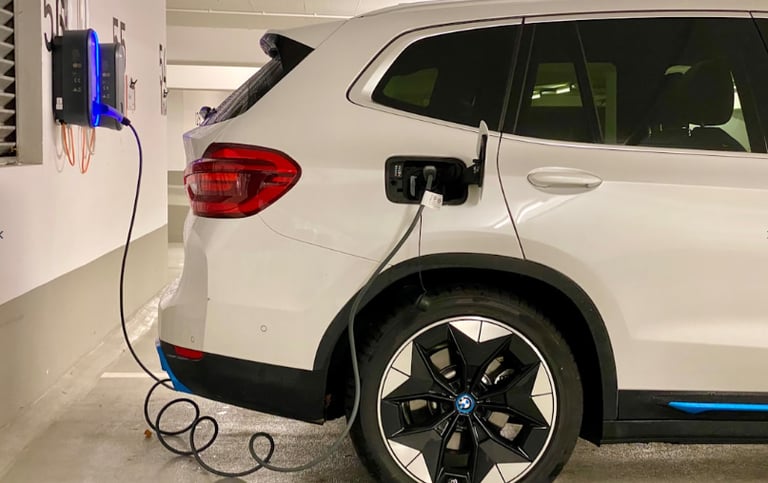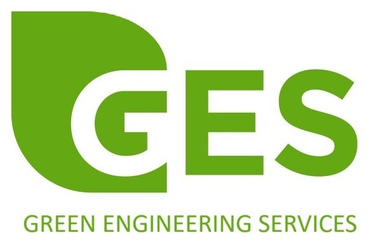EV Charging Ventilation: Shocked, Burned, and Confused
As EV charging expands, so do fire and ventilation challenges. This blog covers key NCC 2022 requirements, safety risks, and essential design considerations focused on mechanical ventilation.
E.A
3/2/20254 min read


With the rapid adoption of electric vehicles (EVs), the demand for charging infrastructure in buildings is increasing. However, integrating EV charging stations within enclosed spaces introduces unique challenges, particularly concerning mechanical exhaust and fire safety.
The NCC 2022, which became mandatory in May 2023, outlines specific requirements for EV charging installations. Section J9D4 mandates that car parks must have the capacity to charge 100% of the parking spaces in Class 2 residential buildings, while other classes have lower percentage requirements. Electrical distribution boards dedicated to EV charging must be installed, approximately one board per 24 car spaces, among other requirements listed in NCC 2022.
With this compulsory provision in carparks and the increasing cases of EV fires from charging, we need to be aware of the risks and how to mitigate them.
EV Charging Risks & Fire Hazards
Although the below points are not a comprehensive list, they offer key fire prevention and protection guidelines:
Fire Risks:
Firefighting Challenges – EV battery fires can experience thermal runaway, burning for over four hours, generating intense heat and risking spread to other vehicles. Water may exacerbate the fire due to chemical reactions within the battery cells, necessitating specialised firefighting techniques.
Toxic & Explosive Environment – EV fires release toxic and flammable gases (Vapour Cloud Explosion risk), requiring adequate ventilation to prevent occupant and emergency responder exposure.
Structural Issues – Multi-vehicle fires generate extreme heat, risking failure of reinforced concrete and steel supports.
Re-ignition Risk – EV batteries can reignite hours or even days after the initial fire is thought to be extinguished.
High-Voltage Hazards – Exposure to high-voltage components during and after a fire increases electrocution risks.
Contaminated Firewater Runoff – Hazardous runoff from EV fires can introduce environmental contamination and disposal challenges.
Side-Vented Flame Jets – Battery failure can result in directional flame jetting, igniting secondary fires.
Fire Causes:
Manufacturing Defects
Overheating Due to Improper Use or Charging Glitches
Mechanical Battery Damage
Thermal Abuse
Rapid Discharge
Fire Risk Mitigation Strategies
To mitigate EV fire risks in enclosed car parks, where external charging locations are not feasible:
Comply with NCC 2022 (E1D17 & E2D21) – These provisions allow for additional fire control measures for special hazards, classifying EVs as such according to FRNSW, QFES, and AFAC.
Fire Engineering Reports – AS 2118.1 & AS 2118.6 may be inadequate for EV fires; hence, a fire engineer should complete a Fire Engineering Report to be reviewed by emergency services before implementation.
Post-Fire Battery Cooling – Ensure battery cooling measures to prevent re-ignition.
Automatic Sprinkler Protection – Sprinklers won’t fully extinguish battery fires but will cool surrounding areas to reduce fire spread.
2-Hour Fire-Rated Charging Enclosures – Enclose charging areas with fire-rated walls.
Proper Ventilation for Enclosed Car Parks – See details in Mechanical Exhaust section below.
Locate EV Charging Near Car Park Entrances – Avoid installation in lower levels, near critical infrastructure or combustible materials.
Vehicle Separation – Maintain space to reduce fire spread risk.
Fire Water Runoff Interceptor System – Prevent contaminated water from spreading.
Physical Protection (Bollards, CCTV, Secure Access) – Prevent unauthorised tampering or accidental damage.
Regular Inspection & Maintenance – Ensure charging stations are monitored and serviced regularly.
Dynamic Load Management System (LMS) – Implements smart charging to avoid electrical overloading and enables remote emergency shutdown.
Mechanical Exhaust & Ventilation for EV Charging
Proper ventilation is essential to prevent hazardous conditions in enclosed EV charging spaces, including home garages, underground car parks, and dedicated charging areas. The NCC mandates that:
Ventilation must prevent the buildup of flammable gases within enclosed areas.
Mechanical exhaust systems should be integrated with fire detection and suppression systems.
As per AS1668.1, car park ventilation systems must remain operable during a fire but are not classified as smoke control systems. However, if an exhaust system serves multiple fire compartments and is also used for stair pressurisation relief, then:
Exhaust fans must comply with Smoke Exhaust requirements.
Fire-resistant cables must be installed and connected to an essential electrical power supply.
Ductwork must be fire-rated or enclosed within a fire-rated structure.
Depending on guidance from the PCA and Fire Engineer, car park exhaust systems serving EV charging stations may need to be designed as Smoke Exhaust systems, incorporating the above requirements.
Regarding airflow rates, AS1668.2:2024 reduces general car park ventilation requirements due to improved vehicle emission controls, including from EVs. However, despite these reductions, targeted ventilation solutions may be necessary for EV charging areas to mitigate toxic gas emissions and fire hazards. In some cases, with guidance from the PCA and Fire Engineer, designing these systems to Smoke Exhaust System standards may be required to ensure safety.
Looking Ahead: NCC 2025 Draft Updates
The upcoming NCC 2025 draft proposes additional requirements:
Charging stations must be within 50m of a distribution board.
Busduct systems may be required to improve power distribution.
Partial installations will be mandated, ensuring future scalability.
New minimum ventilation requirements for enclosed EV charging areas may be introduced.
Conclusion
As EV adoption accelerates, ensuring safe and efficient charging infrastructure is crucial. Mechanical engineers must navigate evolving fire safety, ventilation, and electrical compliance requirements to minimise risks.
For more information about EV charging ventilation and mechanical considerations, contact us at GES.
You can also find this and other posts on our LinkedIn page: GES LinkedIn
Key references:
Risk Authority (FPA, 2021) - RC59 Fire Safety Recommendations for EV Charging
Queensland Fire and Emergency Services (QFES) - EV Fire Safety
ACT Fire & Rescue - Fire Safety Guideline for EVs & Charging Equipment
ABCB Advisory Note (June 2023) - EV Charging Safety in Buildings
RISE Report 2019:50 - Fire Safety of Lithium-Ion Batteries in Road Vehicles
FM Global DS7-42 - Vapour Cloud Explosions Data Sheet (2019)
AS/NZS 3000:2018 Electrical Installations - Appendix P
National Construction Code (NCC) 2022 - Volume One
HVAC Consultants
Expertise in eco-friendly HVAC engineering solutions.
HVAC Consultants is a division of GreenEng Consulting Pty Ltd
© 2025. All rights reserved.
